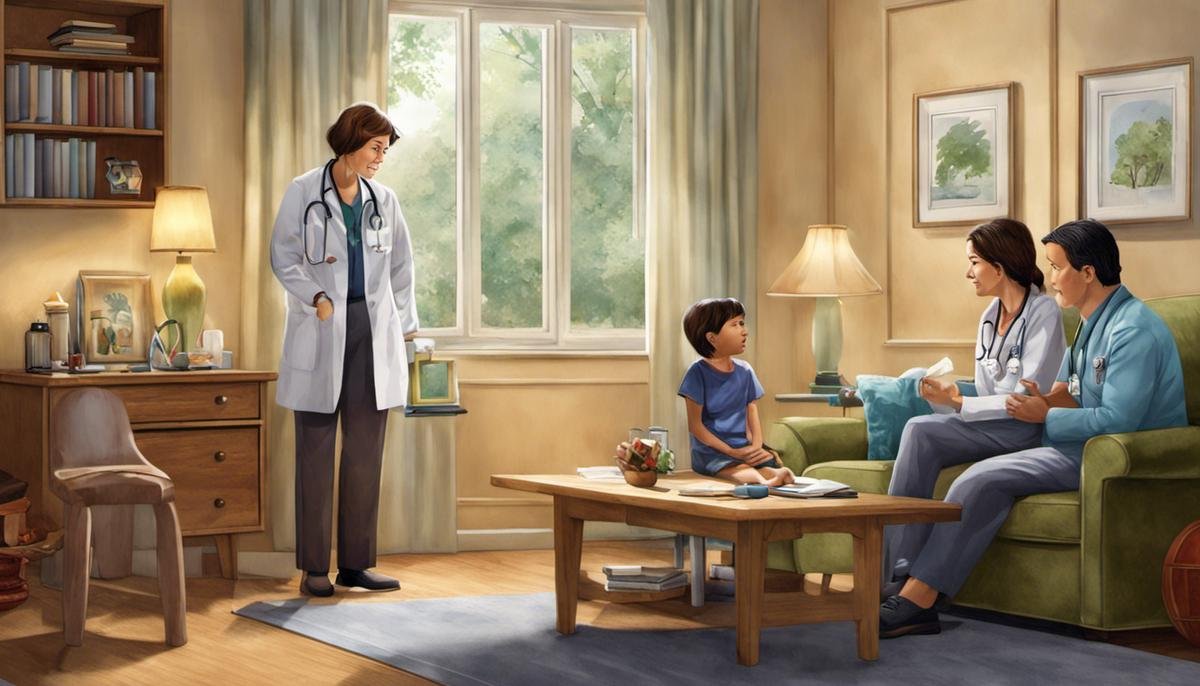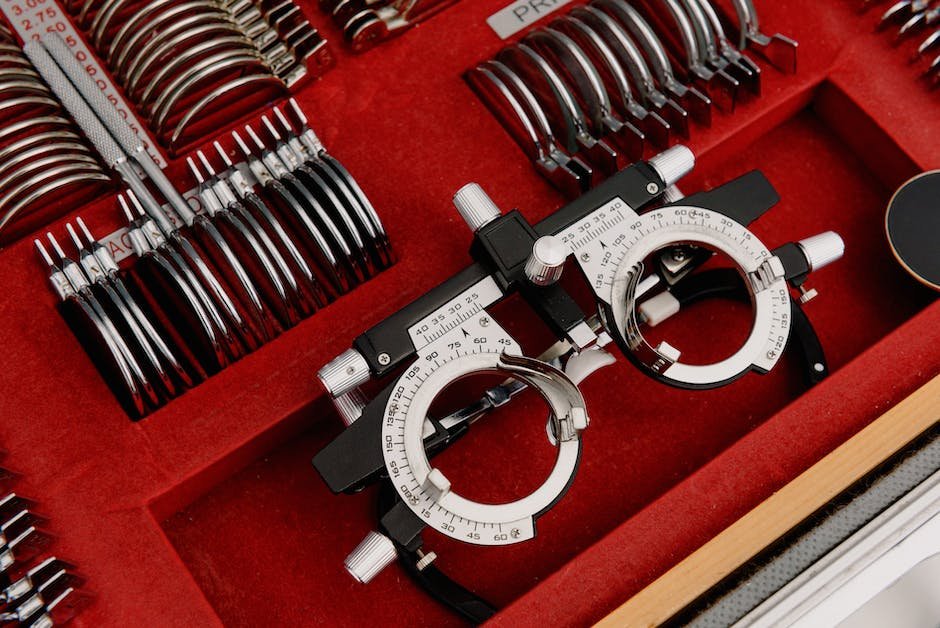
Embracing the vast realm of understanding Autism Spectrum Disorder (ASD) opens doors to discovery, knowledge expansion, and most crucially, compassion. Autism, a complex neurological and developmental condition, presents distinctively in every individual affected and thus, requires a comprehensive understanding of its spectrum. This deep exploration navigates through the nuances of Autism, shedding light on causes, spectrums and traditional diagnosis methods to lay a solid, foundational understanding. It then ventures into the world of cutting-edge techniques for diagnosis of this condition, illustrating the evolution and progress in this vital domain. Finally, it will arm you with practical strategies and resources that can be instrumental before, after, and throughout an autism diagnosis, making this journey manageable and, at times, empowering.
Understanding Autism
Understanding Autism: Essential Knowledge for Parents
Every parent dreams of a happy, healthy life for their child, where they can explore the world, make friends and achieve their own unique potential. But what happens when development does not happen as expected? When your child faces challenges in social interaction, has rigid patterns of behaviors, or exhibits a narrow range of interests and activities, it could be a sign of Autism Spectrum Disorder (ASD).
Autism, often detected in the early years of life, is a neurodevelopmental disorder. Recognizing and understanding autism is crucial not only for parents who have children with autism but also for those who seek to establish a more inclusive, understanding community.
The first important informational nugget to grasp is that autism is a spectrum disorder. This means that its severity, characteristics, and symptoms can fluctuate significantly between individuals. Some children with autism may have difficulties with communication and social interaction, while others may have exceptional abilities in areas like art, math, or music.
Understanding the early signs of autism can help parents take early interventions. Delay in speech development, little to no eye contact, lack of interest in other children, repetitive behaviors, and a strong desire for routine are all signs of autism. If you notice any of these symptoms, it’s important to seek a professional diagnosis.
While it may sound daunting, parents should realize that an autism diagnosis isn’t a dead-end. It’s the beginning of a unique journey—a journey filled with love, learning, and self-discovery. Each child with autism carries a world of unique talents, interests, and abilities that will slowly unfold with time, patience, and appropriate guidance.
Families grappling with an autism diagnosis should seek support from available resources. Many professionals and organizations work tirelessly to provide parents with informational resources, therapeutic options, and supportive communities. Occupational therapy, speech-language therapy, and Applied Behavior Analysis (ABA) are a few common and highly effective intervention strategies.
Parents are often the strongest advocates for their children, especially when it comes to children with special needs. As parents, it’s vital to educate yourselves about your child’s condition, understand their needs, and champion their causes. Advocacy, coupled with love and patience, will pave the way for optimal development and function.
Moreover, fostering an inclusive environment at home and advocating for inclusivity within schools and communities is essential. This not only helps children with autism understand their worth but also nurtures empathy, understanding, and acceptance among other children.
Lastly, remembering that every child is unique and requires tailored support, intervention, and care are key. A diagnosis of autism does not define a child’s potential or limit their possibilities; rather it may offer a different perspective for approaching learning and living.
Hoping this comprehensive understanding helps in nurturing a child with autism, remember, every child is a universe full of fascinating possibilities. Your role as a parent is to help them embrace, learn, and grow from these experiences, shaping them into resilient individuals who not only strive within their uniqueness but celebrate it.
Unlike what many may think, children with autism, like all children, bring immense joy and profound understanding of life. Embrace the journey. It may be arduous, but it is immensely rewarding.

Traditional Autism Diagnosis Methods
Diagnosing Autism: Traditional Methods and Approaches
In navigating through the journey of autism, understanding the diagnosis process is crucial. The first question many parents often ask is, “How is autism traditionally diagnosed?” The answer isn’t as straightforward as one might wish, with each child’s diagnostic process often being as unique as their symptoms and experiences.
Typically, the diagnosis of Autism Spectrum Disorder (ASD) involves a two-stage process. However, before these steps, it’s important for parents to remember to trust their instincts. Moms and dads know their children best and are usually the first ones to notice if there’s something uncommon in their child’s behavior or development. Any concern regarding your child’s social skills, language acquisition, and behavior should be discussed with a healthcare provider.
The initial stage of ASD diagnosis is developmental monitoring, also known as surveillance. This process comprises routine check-ups where doctors observe if the child’s development aligns with typical growth patterns. Pediatricians and other healthcare professionals use suitable screening tools to assess the child’s developmental progress, such as their motor skills, social interaction abilities, and language usage.
This developmental review often happens during well-child visits at 9, 18, and 30 months or anytime the parent or doctor has a development-related concern. If anything atypical is identified, the child progresses to the second stage – the comprehensive developmental evaluation.
The latter stage requires a thorough review of the child’s behavior and development. This stage is often led by a variety of specialist doctors, such as developmental pediatricians, child neurologists, child psychologists, or psychiatrists. These professionals use more detailed evaluation tools, including hearing and vision screening, neurologic testing, and genetic testing.
In addition to this multidisciplinary evaluation, observations of the child’s behavior and interviews with parents occur to gather a comprehensive picture. This can seem intimidating, but remember, it’s just another step towards understanding and supporting your child in the best way possible.
Records like medical history, school and learning evaluation reports, and informational inputs from daycare providers or teachers can be instrumental in throwing light on the child’s developmental journey. The overall process of diagnosing autism traditionally relies heavily on parental involvement. Parents’ first-hand, day-to-day observations of their child’s behavior provide invaluable insights that can help doctors and specialists accurately diagnose and understand the child’s condition.
In conclusion, the traditional diagnosis of autism is a thorough, detail-oriented process that requires a partnership between medical professionals, developmental specialists, and most importantly, parents. Remember, it’s not about labeling your child. It’s about understanding their unique experiences and needs. It gives you the best path to provide them with tailor-made support, allowing them to thrive in their unique way. Diagnosis isn’t an end – it’s the beginning of a journey of understanding, acceptance, and empowerment.

New Autism Diagnosis Methods
Now, let’s delve deeper into the world of modern diagnostics for Autism Spectrum Disorder (ASD). These latest methods have greatly influenced how healthcare professionals, educators, and parents ally to grasp a better understanding of the condition. Technology, research, and collaborative efforts bring forth innovative ways of diagnosing autism.
In the scientific community, cutting-edge genetic testing is gaining momentum. ASD is known to have a strong genetic basis, so a genetic test can provide vital information. This sophisticated method, called Whole Genome Sequencing (WGS), doesn’t merely scan for autism. It involves decoding the entire DNA sequence of an individual. With extreme speed and accuracy, it sheds light on all the molecular genetic information. This tool can be particularly helpful in cases where there are no clear autism signs but an uncanny suspicion persists.
Advanced Brain Imaging technology, such as Functional Magnetic Resonance Imaging (fMRI), is another new tool used to diagnose autism. The fMRI provides a ‘real-time’ look at brain activity, revealing how different parts communicate with each other. This detailed view of the brain’s working enables professionals to pinpoint anomalies. Cases of high-functioning autism, which were previously difficult to diagnose, now benefit from these imaging advances.
Following the same quest for accuracy, the innovative use of Machine Learning and Artificial Intelligence (AI) is revolutionizing ASD diagnosis. These high-tech tools can analyze vast amounts of data at lightning speed. Patterns, correlations, and anomalies that may take a human researcher years to find can be detected in seconds. Notably, AI can also help predict whether high-risk infants will develop ASD. This precise prediction facilitates extremely early intervention strategies.
Eye-tracking technology too has contributed significantly to ASD diagnosis. The way a child looks at and perceives social cues gives away a lot about their neurological condition. Research has found that children with ASD often display a distinct eye-gazing pattern. Eye-tracking technology can accurately chart these patterns and provide important insights into a child’s interaction with the world around them.
In the quest for more accurate diagnoses, the role of parents is just as vital. A new approach, the Diagnostic Interview for Social and Communication Disorders (DISCO), highly respects parental inputs. Parents, as the ones who know their child best, are integral to this family-focused method. DISCO fosters a holistic understanding of the child’s personality, experiences, strengths, and difficulties.
In conclusion, the latest methods in diagnosing autism embrace a combination of science, technology, and human interaction. They collaboratively build the best platform for a child’s success by allowing for better recognition of ASD and inspiring early and effective interventions. As parents, educators, and healthcare workers, it’s our collective role to recognize the potential in these approaches and advocate for their adoption.

Preparation for Autism Diagnosis
An Autism Spectrum Disorder (ASD) diagnosis can often feel overwhelming, not only for parents but also for the child. But remember, knowledge is power, the more we understand about ASD, the better we can provide love, support, and the right interventions for a happier, healthy life.
Ensuring that parents and children are as prepared as possible requires an open dialogue with healthcare providers, continuous monitoring, obtaining a comprehensive evaluation, and accepting the child’s unique needs. Moving forward, the latest technologies and methods can be hugely beneficial in providing a more in-depth understanding of autism and therefore, improving interventions.
Harnessing the Power of Technology
In an age where technology continuously evolves, its application within healthcare is far-reaching, even extending to autism diagnosis. Whole Genome Sequencing (WGS), which provides a comprehensive analysis of a person’s entire genetic information, can help identify genetic variations associated with autism. Advanced brain imaging technology, like Functional Magnetic Resonance Imaging (fMRI), provides key insights into how the brain functions and enables researchers to understand better the complexities associated with autism and how it alters brain development.
Machine Learning and Artificial Intelligence (AI), meanwhile, are becoming increasingly useful in analyzing data patterns, thereby helping predict and diagnose autism earlier. Eye-tracking technology is another effective tool, particularly in diagnosing younger children, by analyzing their visual attention and social engagement degrees.
Involving Parents in Diagnosis
Parents are not just caregivers, but they’re also crucial contributors to their child’s diagnosis process. Feel encouraged to participate actively because no one knows your child better than you do. The Diagnostic Interview for Social and Communication Disorders (DISCO) is one such method encompassing parental involvement, providing valuable insights into the child’s experiences and subjective world that may go unnoticed in medical examinations.
The Final Word: Collaboration is Key
Remember, diagnosing autism isn’t the sole responsibility of healthcare professionals, but a collaborative process that involves educators, family members, and the community at large. Everyone has a unique part to play, and with everyone’s joint efforts, you can undoubtedly provide your child the best possible support.
While an autism diagnosis can initially bring a lot of uncertainty and anxiety, it’s crucial to remember it’s the beginning, not the end. It opens up a journey of profound understanding, acceptance, and empowerment for you and more importantly, for your child. It’s the first step to create an environment that encourages the child’s unique strengths and abilities to flourish, just like any other child.
Above all, an autism diagnosis guides the way towards early interventions, which are key to improving a child’s development. By embracing these technologies and resources and valuing our crucial roles as parents, we can all help change the narrative of autism. After all, it’s not about the diagnosis itself, but what we do about it that truly matters.

Post-diagnosis support and strategies
Moving Forward: Parenting Strategies for Children Diagnosed with Autism Spectrum Disorder
Navigating an autism diagnosis can feel like sailing through uncharted waters. As the encompassing news settles in, you’re probably asking, “What’s next?” Arm yourself with the resolve that parenting is a journey – an expedition filled with twists, turns, love, and, yes, tough times. Support and strategies are readily available, you just need to know where to look and how to subset them to suit your family’s unique needs.
Communication becomes the lifeline for a child with autism. A proven therapy, Speech-Language Pathology (SLP), enhances verbal, nonverbal, and social communication. Certified speech-language pathologists work in collaboration with parents, providing assistive technologies, picture exchange communication system (PECS), or sign language for nonverbal children.
Similarly, social skills therapy, such as Applied Behavior Analysis (ABA), the gold standard for autism intervention, uses strategies to increase useful behaviors while reducing those hindering learning or causing harm. Understanding that children learn differently and their progress varies is vital – remember, it’s not a race but a journey.
Further, occupational therapy can aid in mastering daily living skills, involving fine and gross motor skills, handwriting, dressing, transitioning between activities or environments. Parents can implement these strategies at home, creating a comfort zone for their child.
Now, let’s talk about nurturing that unique mind. Children with autism often show heightened interest in specific topics like music, math, or visual arts. Encouraging these strengths brings joy to their world and presents opportunities for connecting with others sharing similar interests. Remember that a diagnosis of autism isn’t a full stop, but a chance to construct a nurturing environment that celebrates differences.
Additionally, adopting an autism-friendly diet can work wonders. Several studies indicate the positive impacts of a gluten-free/casein-free (GFCF) diet on behaviors in children with autism. As parents, understanding such dietary impacts and modifying your child’s diet— with the guidance of a nutritionist— can lead to substantial improvements.
Exercise, in moderation, can boost mood and improve concentration in children with autism. Activities like swimming, horseback riding, or cycling can be enjoyable ways for your child to stay active, promoting physical and emotional well-being.
Incorporating a flexible yet structured routine can provide a sense of security and predictability, hence lowering anxiety and promoting better sleep, feeding, and behavior in children with autism. Parents can introduce and sustain these routines at home, making necessary changes gradually.
Online resources, such as Autism Speaks, National Autism Association, and The Autism Community in Action (TACA), can provide plentiful information and support. Look for local support groups— hearing other parents’ experience can be comforting and valuable. They will have advice, resources, and just a listening ear when needed.
Lastly, ensuring the child’s academic needs are met is crucial. An Individualized Education Program (IEP) is apt for some children and is legally enforced in US public schools. With the assistance of an advocate, you can navigate through the paperwork and meetings to ensure your child gets the tailored education they deserve.
These are not one-size-fits-all solutions, but knowing that there is help available can provide the much-needed reassurance for your journey ahead. Remember, sometimes the waves might get choppy, but you’re not sailing this ship alone. The love for your child and the desire to see them thrive and live a fulfilling life makes the journey worth it. Support, community, and personalized strategies are at your disposal— so strap up and plunge into this adventure with love, patience, perseverance, and optimism.

Through the journey of delving into Autism, one comes to appreciate the advancements in diagnostic techniques and the immense value this presents. These new methods have the potential to transform lives, offering earlier and more accurate conclusions leading to effective and personalized treatment strategies. However, navigating through an autism diagnosis, whether suspected or confirmed, can be challenging, but it’s essential to remember that help is at hand. From emotional preparation to post-diagnosis support strategies, this journey is not one to be taken alone. With the right tools, knowledge, and a caring, understanding community, it becomes a journey of resilience, strength, and, ultimately, hope.




